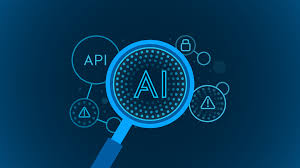What Are AI-Based Threat Detection Tools?
AI-based threat detection tools use machine learning algorithms, behavioral analysis, and threat intelligence to:
-
Detect anomalies and suspicious activities
-
Predict potential cyberattacks before they happen
-
Automate threat response actions
-
Reduce false positives through intelligent filtering
These systems continuously learn and adapt, making them ideal for defending complex enterprise environments.
Why Enterprises Need AI-Powered Threat Detection
-
Massive Attack Surface: Enterprises have large, distributed networks (cloud, remote, IoT) that can’t be monitored manually.
-
Advanced Threats: Sophisticated APTs (Advanced Persistent Threats), zero-day attacks, and ransomware now evade signature-based tools.
-
Rapid Response Needed: AI enables real-time analysis and auto-remediation, reducing dwell time.
-
Compliance Requirements: Standards like ISO 27001, NIST, SOC 2, and GDPR increasingly expect automated threat detection capabilities.
Top AI-Based Threat Detection Tools for Enterprises (2025)
1. Darktrace
What it does: Uses self-learning AI to detect novel threats across email, network, endpoint, and cloud.
-
Autonomous response (Antigena module)
-
Cyber AI Analyst generates human-readable incident reports
-
Protects SaaS, IaaS, and industrial systems
Best for: Large enterprises needing complete, autonomous protection

2. CrowdStrike Falcon XDR
What it does: Cloud-native extended detection and response (XDR) platform with AI-driven threat detection across endpoints and workloads.
-
AI-powered malware detection
-
Integrated threat intelligence and automated hunting
-
Lightweight agent for all OS environments
Best for: Enterprises seeking fast deployment and hybrid cloud protection
3. Microsoft Defender for Endpoint
What it does: Uses machine learning and threat intelligence to protect Windows, macOS, Linux, iOS, and Android.
-
Real-time behavioral detection
-
Automatic investigation and remediation
-
Deep integration with Microsoft 365 Defender and Sentinel
Best for: Enterprises already using Microsoft’s ecosystem
4. Palo Alto Cortex XDR
What it does: Uses AI to correlate network, endpoint, and cloud data for early threat detection and response.
-
Unified data platform for analytics
-
Machine learning-based anomaly detection
-
Native integration with firewalls and Prisma Cloud
Best for: Enterprises needing high-context alerts and full-stack visibility
5. Vectra AI
What it does: Specializes in detecting hidden threats in network traffic using AI and behavioral analytics.
-
AI-driven threat scoring
-
Works across cloud (AWS, Azure), SaaS (M365), and hybrid networks
-
Detects lateral movement and insider threats
Best for: Enterprises focused on lateral threat detection and NDR
6. IBM QRadar SIEM + Watson AI
What it does: Combines SIEM with Watson AI to accelerate threat detection and investigation.
-
Cognitive AI-driven insights from security logs
-
Supports custom rules and playbooks
-
Integrates with 500+ data sources
Best for: Large-scale enterprises with complex compliance needs
7. SentinelOne Singularity XDR
What it does: Unified XDR platform using AI to detect and autonomously respond to threats at machine speed.
-
Static + behavioral AI engines
-
Cloud workload protection (CWPP)
-
Real-time MITRE ATT&CK mapping
Best for: High-performance security with automated response
8. Cynet 360 AutoXDR
What it does: All-in-one platform with automated threat detection, incident response, and compliance tools.
-
Pre-built detection rules powered by AI
-
Automatic remediation workflows
-
24/7 MDR support included
Best for: Mid-size to large organizations seeking a fully managed XDR
9. Trellix (formerly McAfee + FireEye)
What it does: Merges endpoint protection, AI threat detection, and advanced threat intelligence.
-
AI-based malware detection
-
Threat scoring and automated workflows
-
Supports integration with third-party SIEM/SOAR
Best for: Enterprises needing customizable, threat-informed defense

Common AI Techniques Used in Threat Detection
| AI Technique | Application in Security |
|---|---|
| Anomaly Detection | Identify outliers in user or system behavior |
| Predictive Modeling | Forecast likely breach points or attacker methods |
| Natural Language Processing (NLP) | Interpret threat intelligence and security logs |
| Reinforcement Learning | Improve detection models from feedback |
| Behavioral Analysis | Detect insider threats and account compromise |
Benefits of AI in Threat Detection
-
Speed: Detects threats in real-time or within seconds
-
Scalability: Handles millions of logs/events across large networks
-
Accuracy: Reduces false positives with smarter filtering
-
Automation: Initiates auto-remediation without human intervention
-
Adaptability: Learns from new attack patterns and adjusts
How to Choose the Right Tool
Consider the following when selecting an AI-based threat detection platform:
| Criteria | What to Look For |
|---|---|
| Integration | Works with existing tools like SIEM, EDR, SOAR, firewalls |
| Real-Time Detection | Capable of alerting within seconds |
| Cloud Compatibility | Protects multi-cloud and hybrid infrastructures |
| Response Automation | Supports SOAR or built-in playbooks |
| Threat Intelligence | Ingests global threat feeds and context sources |
| Compliance Support | Helps meet HIPAA, PCI DSS, SOC 2, etc. |
Final Thoughts
AI-based threat detection tools are revolutionizing enterprise cybersecurity by enabling proactive, automated, and intelligent defenses. With rising threats and evolving attack methods, legacy systems are no longer enough. Whether you’re a Fortune 500 company or a fast-growing mid-sized enterprise, implementing an AI-driven threat detection platform is a strategic move toward cyber resilience.






